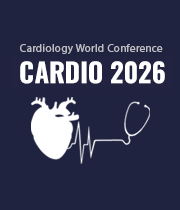Title : Relationship of mean arterial pressure with other cardiac and biological factors
Abstract:
Objectives: The report focuses the associations of mean arterial pressure (MAP) for shock patients based on probabilistic modeling with a real data set of 113 shock patients.
Background: The relationship of MAP with the other cardiac and biological factors is very complicated which has been very little studied based on probabilistic modeling.
Material & Methods: A real data set of 113 shock patients with 20 study variables is considered in the report, which is available in the site http://www.umass.edu/statdata/statdata/data/shock.txt A probabilistic model of MAP has been derived herein with statistical joint generalized linear models.
Results: The MAP is positively associated with age (P<0.0001), cardiac index (CI) (P<0.0001), hemoglobin (P=0.0504), urinary output (UO) (P=0.0566), diastolic blood pressure (DBP) (P<0.0001), systolic blood pressure (SBP) (P<0.0001), joint interaction effects of red cell index (RCI) & body surface index (BSI) (RCI*BSI) (P=0.0434), plasma volume index (PVI)*DBP (P<0.0001), mean central venous pressure (MCVP) & heart rate (HR) (MCVP*HR) (P=0.0104), MCVP*DBP (P<0.0001), while it is negatively associated with BSI (P=0.0081), MCVP (P<0.0001), mean circulation time (MCT) (P=0.0004), hematocrit (HCT)*PVI (P=0.0356), UO*AGE (P=0.0012), SBP*HR (P<0.0001), DBP*SBP (P<0.0001). Variance of MAP is negatively associated with RCI (P<0.0001), BSI (P<0.0001), CI (P=0.0009). sex (P=0.0352), shock type at level 3 (P=0.0194), DBP (P=0.0001), HCT*HR (P=0.0009), DBP*MCVP (P=0.0225), while it is positively associated with RCI*HCT (P<0.0001), BSI*HR (P=0.0029), CI*HR (P=0.0033), SBP*DBP (P=0.0373) and BSI*DBP (P=0.0027).
Conclusion: MAP is higher at older ages. It increases if SBP, or DBP, or CI, or UO, or HG, or MCVP*HR, or MCVP*DBP, or RCI*BSI, or PVI*DBP increases. It decreases if MCVP, or BSI, or MCT, or PVI*HCT, UO*Age, or SBP*HR, or DBP*SBP increases.



